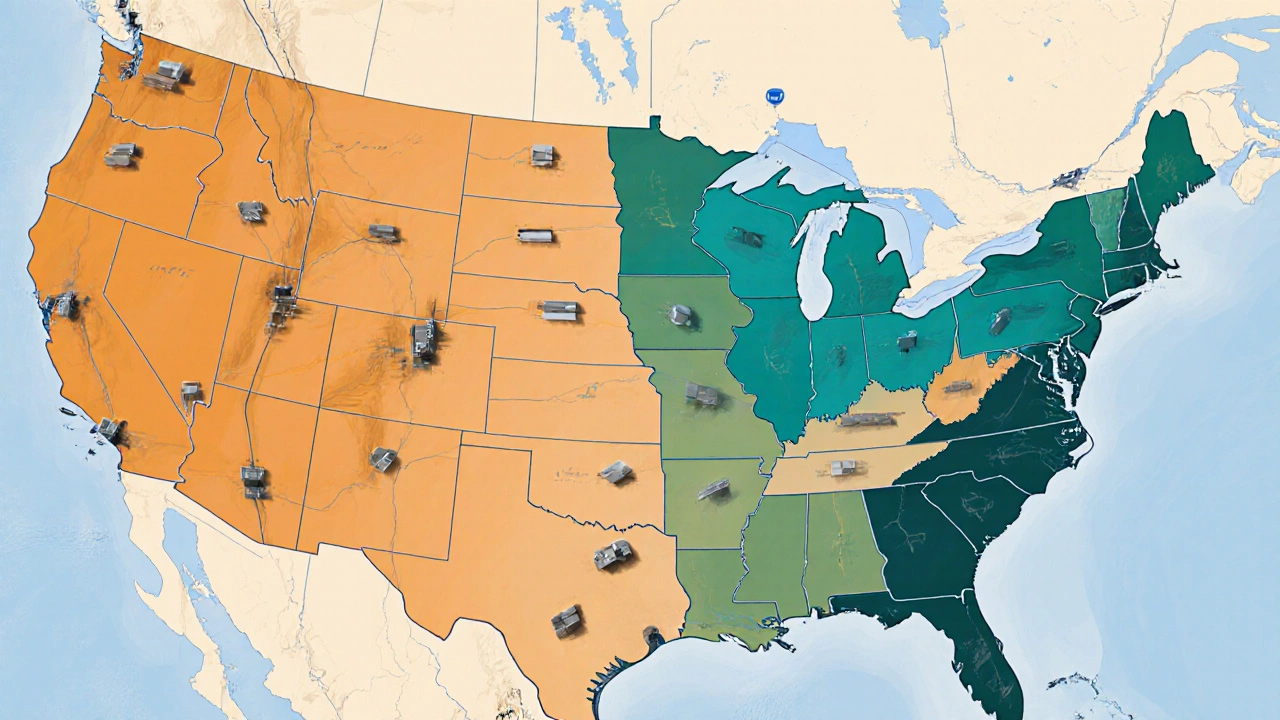What Is the Average Warehouse Rent in the US? 2025 Guide
Discover the 2025 average US warehouse rent, regional price differences, key cost drivers, and tips for securing the best lease.
When dealing with warehouse rent rates, the amount you pay to lease space for storing goods, usually quoted per square foot per month. Also known as storage lease rates, it reflects local market demand, facility quality, and contract length. Warehouse rent rates can swing dramatically between a cramped city block and a sprawling suburban park. Knowing what drives those numbers helps you avoid overpaying and keeps your logistics budget in check.
One of the biggest levers you have is the warehouse management system, software that tracks inventory, optimizes space usage, and forecasts demand. A good WMS lets you squeeze more pallets into the same footprint, which directly lowers the effective rent per unit stored. It also supplies data you can show to landlords to negotiate better terms – they’ll see you’re using space wisely and may cut the rate. Pair that with a clear view of your logistics cost calculation, the method of adding up transport, handling, and storage expenses to get a total cost of moving goods. When you add rent into that equation, you’ll spot hidden savings, like choosing a slightly farther location that drops the rent enough to offset extra trucking miles.
Not all warehouses are created equal. The warehouse types, categories such as storage warehouses, distribution centers, and fulfillment centers each come with distinct price drivers. A pure storage warehouse may charge less per square foot but might lack loading docks, forcing you to pay extra for off‑site handling. Distribution centers usually sit near highways, so they command higher rents, yet they cut your inbound/outbound fuel costs. Fulfillment centers add value with picking and packing services, meaning the rent includes a share of labor expenses. Understanding which type matches your business flow lets you target the right market and avoid paying for features you never use.
Location, contract length, and facility amenities create a web of factors that push rent up or down. Short‑term leases give flexibility but often carry a premium, while long‑term agreements can lock in lower rates if you’re confident about future volume. Amenities like climate control, 24‑hour access, and security systems add to the base price but also protect high‑value inventory – that trade‑off is part of the rent‑value equation. By mapping these attributes against your inventory turnover, you can decide whether a higher rent makes sense for faster turnover or whether a cheaper, slower‑turn warehouse is smarter.
All this tells you why the articles below are useful. They dive deeper into cost‑saving tools, compare the biggest logistics players, explain how to calculate shipping prices, and walk you through the stressors of managing a warehouse. Whether you’re a small shop looking for a first lease or a larger operation planning a network of distribution hubs, the insights here will help you read a rent quote like a pro and negotiate from a position of knowledge.

Discover the 2025 average US warehouse rent, regional price differences, key cost drivers, and tips for securing the best lease.